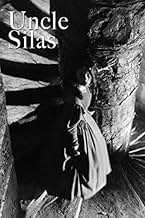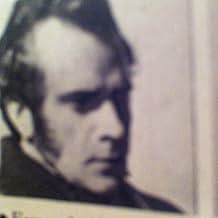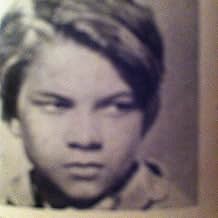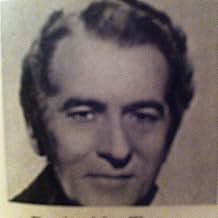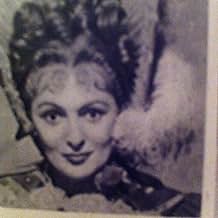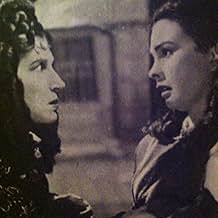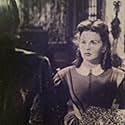Füge eine Handlung in deiner Sprache hinzuFollowing her father's death, a teenage British heiress goes to live with her guardian uncle--who is broke and schemes to murder her for her inheritance.Following her father's death, a teenage British heiress goes to live with her guardian uncle--who is broke and schemes to murder her for her inheritance.Following her father's death, a teenage British heiress goes to live with her guardian uncle--who is broke and schemes to murder her for her inheritance.
- Regie
- Drehbuch
- Hauptbesetzung
Empfohlene Bewertungen
This moody version of Joseph Sheridan Le Fanu's classic Gothic novel is quite simply one of the most accomplished British films of the 1940's.
With cinematography reminiscent of (and rivaling)that seen in David Lean's "Great Expectations," it is a pity that this picture is not better known.
This may accrue from the fact that an American, heavily edited, and re-titled version ("The Inheritance") is the only print in U.S. circulation.
At all costs avoid this butcher job, as the 6 minutes of missing footage are very germane to the story's narrative, mood and imagery.
Jean Simmons is a reminder of yet another lost dramatic staple--a decorous, demure heroine, who speaks in complete sentences with flawless diction. Her lady like deportment combined with her unquestioned loveliness makes her a very sympathetic Lady Caroline. Mr. De Marney is similarly impressive as the sinister, titular character.
But the film belongs to Katina Paxinou as the redoubtable Madame De La Rougierre. I believe Mr. Le Fanu would approve of her performance. In any case, her first appearance, as depicted with her malignant face peering through a rain lashed window pane, is as startling an entrance as one could hope for.
Laurence Irving's art direction is superb, (and some of his sketches for this film are included in Edward Carrick's "Art and Design in the British Film," Dennis Dobson, London) fully realizing, as it does, the stories' atmospheric requirements, and amply demonstrating how superior sound stages are to location shooting.
All told, this picture stands favorably alongside Thorold Dickinson's "Queen of Spades," Terence Young's "Corridor of Mirrors," Anthony Pelissier's "Rocking Horse Winner," Leslie Arliss' "Night Has Eyes," Jacques Tourneur's "Experiment Perilous," and Martin Gabel's "The Lost Moment," as one of a small group of visually distinguished Gothic melodramas of the 1940's, and far superior to the more recent television version, which despite the welcome presence of Peter O'Toole and Barbara Shelley lacks both flavor and mood.
With cinematography reminiscent of (and rivaling)that seen in David Lean's "Great Expectations," it is a pity that this picture is not better known.
This may accrue from the fact that an American, heavily edited, and re-titled version ("The Inheritance") is the only print in U.S. circulation.
At all costs avoid this butcher job, as the 6 minutes of missing footage are very germane to the story's narrative, mood and imagery.
Jean Simmons is a reminder of yet another lost dramatic staple--a decorous, demure heroine, who speaks in complete sentences with flawless diction. Her lady like deportment combined with her unquestioned loveliness makes her a very sympathetic Lady Caroline. Mr. De Marney is similarly impressive as the sinister, titular character.
But the film belongs to Katina Paxinou as the redoubtable Madame De La Rougierre. I believe Mr. Le Fanu would approve of her performance. In any case, her first appearance, as depicted with her malignant face peering through a rain lashed window pane, is as startling an entrance as one could hope for.
Laurence Irving's art direction is superb, (and some of his sketches for this film are included in Edward Carrick's "Art and Design in the British Film," Dennis Dobson, London) fully realizing, as it does, the stories' atmospheric requirements, and amply demonstrating how superior sound stages are to location shooting.
All told, this picture stands favorably alongside Thorold Dickinson's "Queen of Spades," Terence Young's "Corridor of Mirrors," Anthony Pelissier's "Rocking Horse Winner," Leslie Arliss' "Night Has Eyes," Jacques Tourneur's "Experiment Perilous," and Martin Gabel's "The Lost Moment," as one of a small group of visually distinguished Gothic melodramas of the 1940's, and far superior to the more recent television version, which despite the welcome presence of Peter O'Toole and Barbara Shelley lacks both flavor and mood.
I really enjoyed "Uncle Silas", although it's called "The Inheritance" on the VHS copy that I own and there are seemingly five minutes of footage missing. It's a wonderful, creepy little film about a young woman, Caroline (lovely Jean Simmons), who goes to live with her scheming old Uncle Silas in his big, gloomy mansion after her father dies. Uncle Silas (perfectly played by Derrick De Marney) and his accomplices; a French governess, Madame de la Rougierre (marvelously played by Katina Paxinou), and his son, Dudley (well played by Manning Whiley) are planning to do away with the heroine to gain her fortune. Thankfully, there are intervals where the young woman visits with her sympathetic cousin Monica (nicely played by Sophie Stewart). Brilliant music score by Alan Rawsthorne is available on CD through Amazon.com on a collection called Rawsthorne:Film Music. Nice cinematography and sets add the finishing touches to this atmospheric film. I got my VHS copy from Movies Unlimited.com.
I read in other user comments above that several U.S. viewers have only been able to see "Uncle Silas"(1947) in the inferior and censored title of "The Inheritance".Like the original "The Wicked Lady" 1945 which had to be re-shot minus décolletage, this was released at a time in America of great prudery.I am happy to report to my said U.S.brethren that the original U.K. version is available from www.myrarefilms.co.uk for which I paid £5 or about $7 + postage in your currency.In this more liberal climate I hate films being censored, after all, I am 69,so purchase a copy of the original rather than watch an inferior copy.
Jean Simmons was born in 1929 so when asked her age (16) in "Uncle Silas" she is nearly telling her real age of 18 and very young fresh & lovely she looks.Full marks to the set & dress designers to show clothes worn by ladies in 1845.Derek de Marney for once plays a villain as Uncle Silas compared to say "Young & Innocent" (1937) directed by Hitchcock, when he played the hero wrongly accused of murdering a lady associate found strangled on a beach.Other reviewers have adequately explained the plot above but do make an effort to see this film if you like Gothic horror.
Jean Simmons was born in 1929 so when asked her age (16) in "Uncle Silas" she is nearly telling her real age of 18 and very young fresh & lovely she looks.Full marks to the set & dress designers to show clothes worn by ladies in 1845.Derek de Marney for once plays a villain as Uncle Silas compared to say "Young & Innocent" (1937) directed by Hitchcock, when he played the hero wrongly accused of murdering a lady associate found strangled on a beach.Other reviewers have adequately explained the plot above but do make an effort to see this film if you like Gothic horror.
This little known film disappeared into obscurity and without much comment after its release in 1947. It has resurfaced on British TV in recent years where it has been given several matinee showings. BBC readapted the Sheridan Le Fanu novel as "The Dark Angel" for its classic novel Christmas offering in 1987. In Peter O'Toole they found a much more striking eponymous villain than Derrick de Marney but in every other sense it is the monochrome 'forties version that gives me the stronger pleasure. How could if fail with a heroine as touchingly vulnerable as Jeans Simmons at her most enchanting. The pair that later directed her in "So Long at the Fair" must have known of "Uncle Silas" when they opened their film with a similar wondrous closeup to our first encounter with her here. I know nothing of the director Charles Frank apart from "Uncle Silas" but the hands of a talented craftsman are clearly at the helm of this atmospheric adaptation of the Victorian Gothic melodrama about a dastardly uncle's attempt to wrest an inheritance from his trusting young niece. It is a pity that Derrick de Marney's hammy performance does not resonate with a greater sense of evil, but there is compensation in his confidante, Madame de la Rougierre who, in the hands of Katrina Paxinau, is one of cinema's most sinister female monsters. I was not disappointed when the sequence that had so fascinated me as an impressionable adolescent, where the evil governess embarks with her young charge on a journey of deception, emerged as powerfully as ever after a gap of so many years. The clock chimes of Bartram Manor that conclude this episode, like the huntsman's cry of "Gone to Earth" in the Powell and Pressburger masterpiece are among my most haunting cinematic memories. I often wonder if young audiences of today find similar marvels in the films made for them.
Uncle Silas is directed by Charles Frank and adapted to screenplay by Ben Travers from the novel of the same name written by Sheridan Le Fanu. It stars Jean Simmons, Katina Paxinou, Derrick De Marney, Derek Bond, Sophie Stewart and Esmond Knight. Music is by Alan Rawstone and cinematography by Robert Krasker.
Upon the death of her loving father, teenager Caroline Ruthyn (Simmons) is bequeathed the family inheritance when she reaches the age of 21. In the interim she is requested to go live with her Uncle Silas (De Marney) in his ramshackle Gothic mansion. Silas was once considered unbalanced, even getting off with a murder charge when some felt he was guilty as sin, but now he seems warm towards Caroline. Is it a bluff? When Silas' weird son arrives on the scene and her fearsome former governess is found to be haunting the edges of the frames, Caroline suspects she may indeed be in danger.
A film dripping with Gothic delights, Uncle Silas is undeniably dated, as evidenced by the over acting that surrounds the excellent Simmons, but this is no Jamaica Inn. Atmosphere unbound here as Charles Frank and the brilliant Robert Krasker surround the nastiness of the plot with nightmarish visuals and scenes fit to grace any bigger budgeted horror of the decade.
The mansion is a classic fit for such a tale of heiress stalk and kill fare, though it is more run down than the opulence of something like Manderley. With 90% of the picture shot in dark and shadows, where light comes via candles and firesides, the mood of impending peril is always high. Add in a few stormy nights, mysterious rooms, locked gates and characters straight out of one of James Whale's dreams and you are good to go for bodice bedlam.
Director Charles Frank (co-writer The Late Edwina Black) had no career whatsoever, which on this evidence is baffling. OK! He wasn't able to rein in De Marney and Paxinou on this one, though in the case of the latter it's a glorious case where excess fits the nightmarish dream- scape, but some of his visual touches hint at what a good noir style director he could have been. With two nightmare sequences superb, one Brandy inspired and an array of canted angles and shadowy menaced frames filing out the piece, this shows superbly someone able to sustain foreboding atmosphere.
In some sources it is listed that Nigel Huke was co-cinematographer, but on others not so, and I certainly didn't see his name on the credits when the film rolled? But what we can see for sure is Krasker at his best. In the same year as Uncle Silas he would elevate Carol Reed's Odd Man Out to classic cinematography status, and two years later he would of course be an integral part of what made The Third Man the deservingly revered picture it is. Uncle Silas represents something of a must see for Krasker purists. It's also definitely a film that Simmons fans should seek out.
The over acting will irritate some, and the mid-point drags as it goes into gaiety mode and nearly derails the suspenseful mood that has been built up deftly. But it quickly overcomes this and gets back on track to be a cracker waiting to be gorged on by like minded film fans. It would make a nice appetiser to Ealing's brilliant Queen of Spades, or as B support to The Spiral Staircase. It was released as The Inheritance in the States, and had changes made, suffice to say that anyone interested in this movie should see only the British version. Maybe that was where Huke was involved? In the American cut? Oh well, Uncle Silas, Brit version, wonderfully kinked. 8/10
Upon the death of her loving father, teenager Caroline Ruthyn (Simmons) is bequeathed the family inheritance when she reaches the age of 21. In the interim she is requested to go live with her Uncle Silas (De Marney) in his ramshackle Gothic mansion. Silas was once considered unbalanced, even getting off with a murder charge when some felt he was guilty as sin, but now he seems warm towards Caroline. Is it a bluff? When Silas' weird son arrives on the scene and her fearsome former governess is found to be haunting the edges of the frames, Caroline suspects she may indeed be in danger.
A film dripping with Gothic delights, Uncle Silas is undeniably dated, as evidenced by the over acting that surrounds the excellent Simmons, but this is no Jamaica Inn. Atmosphere unbound here as Charles Frank and the brilliant Robert Krasker surround the nastiness of the plot with nightmarish visuals and scenes fit to grace any bigger budgeted horror of the decade.
The mansion is a classic fit for such a tale of heiress stalk and kill fare, though it is more run down than the opulence of something like Manderley. With 90% of the picture shot in dark and shadows, where light comes via candles and firesides, the mood of impending peril is always high. Add in a few stormy nights, mysterious rooms, locked gates and characters straight out of one of James Whale's dreams and you are good to go for bodice bedlam.
Director Charles Frank (co-writer The Late Edwina Black) had no career whatsoever, which on this evidence is baffling. OK! He wasn't able to rein in De Marney and Paxinou on this one, though in the case of the latter it's a glorious case where excess fits the nightmarish dream- scape, but some of his visual touches hint at what a good noir style director he could have been. With two nightmare sequences superb, one Brandy inspired and an array of canted angles and shadowy menaced frames filing out the piece, this shows superbly someone able to sustain foreboding atmosphere.
In some sources it is listed that Nigel Huke was co-cinematographer, but on others not so, and I certainly didn't see his name on the credits when the film rolled? But what we can see for sure is Krasker at his best. In the same year as Uncle Silas he would elevate Carol Reed's Odd Man Out to classic cinematography status, and two years later he would of course be an integral part of what made The Third Man the deservingly revered picture it is. Uncle Silas represents something of a must see for Krasker purists. It's also definitely a film that Simmons fans should seek out.
The over acting will irritate some, and the mid-point drags as it goes into gaiety mode and nearly derails the suspenseful mood that has been built up deftly. But it quickly overcomes this and gets back on track to be a cracker waiting to be gorged on by like minded film fans. It would make a nice appetiser to Ealing's brilliant Queen of Spades, or as B support to The Spiral Staircase. It was released as The Inheritance in the States, and had changes made, suffice to say that anyone interested in this movie should see only the British version. Maybe that was where Huke was involved? In the American cut? Oh well, Uncle Silas, Brit version, wonderfully kinked. 8/10
Wusstest du schon
- WissenswertesThis film's earliest documented US telecast took place in Los Angeles Monday 3/27/50, leading off Triple Feature Theatre on KECA (Channel 7), hosted by Art Baker.
- PatzerThe length of Jean Simmons' ringlets change from one shot to the other.
- Zitate
Uncle Silas Ruthyn: And here you are! One of my hopes fulfilled.
- Alternative VersionenThe American release, under the title, "The Inheritance" is six minutes shorter than the original British version, titled "Uncle Silas," after the film's source novel.
- VerbindungenVersion of El misterioso tío Sylas (1947)
- SoundtracksMy Hat, It Has Three Corners
(uncredited)
American traditional song
Played in the background during the scene in the London hotel.
Top-Auswahl
Melde dich zum Bewerten an und greife auf die Watchlist für personalisierte Empfehlungen zu.
Details
Box Office
- Budget
- 1.000.000 $ (geschätzt)
- Laufzeit
- 1 Std. 43 Min.(103 min)
- Farbe
- Seitenverhältnis
- 1.37 : 1
Zu dieser Seite beitragen
Bearbeitung vorschlagen oder fehlenden Inhalt hinzufügen

